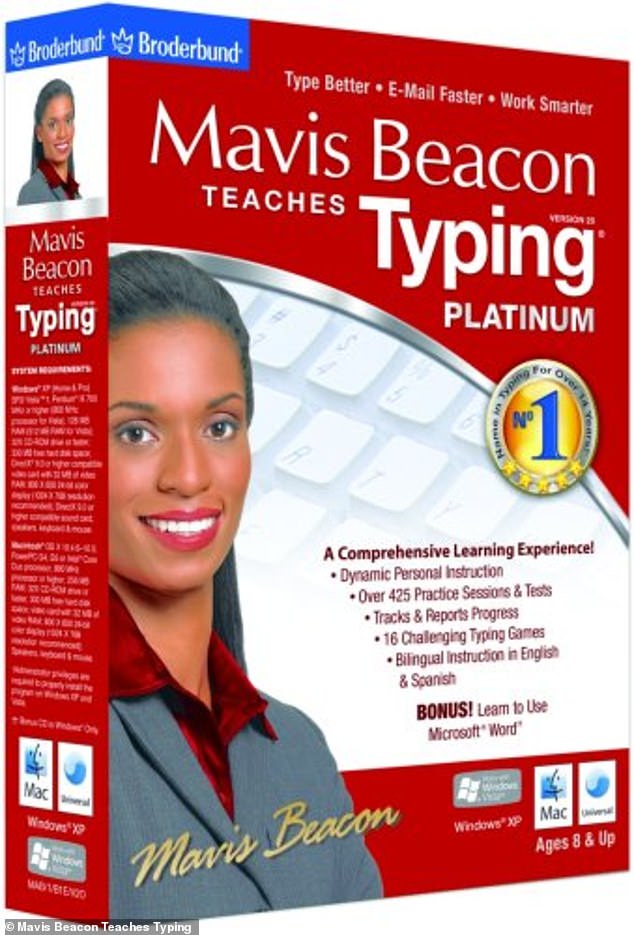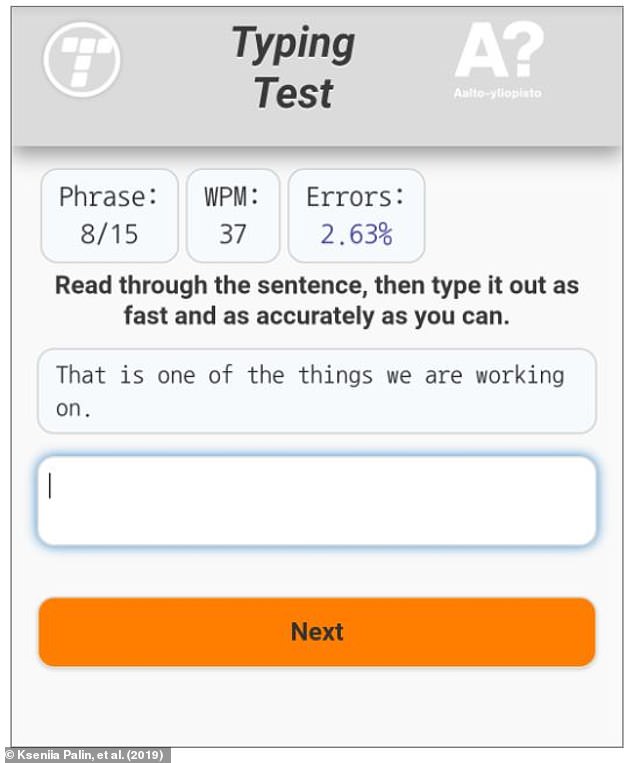Experts fear that the phone-addicted Gen Z will no longer be able to use a computer keyboard. But how fast can YOU type?
For a generation glued to their screens, you’d expect Gen Z to be an electronic savvy.
However, experts suspect that the online generation may be losing the ability to type on a keyboard.
As smartphones and tablets outpace laptops and desktop computers, many worry that touch typing will become a forgotten skill.
In April, Gen Z icon Billie Eilish told Rolling Stone, “I never learned to type because I wasn’t part of that generation, and now I regret it.”
So, how fast can you type? Take the test below to find out.
In April, Billie Eilish revealed that she couldn’t touch type, saying it was because she “wasn’t part of that generation.” Like Ms. Eilish, many Gen Zers appear to lack this core skill
Over the past 25 years, the number of young people taking typing courses has fallen dramatically.
According to a report in the Wall Street Journal.
In the UK, schools can decide to offer a national Ofqual certificate in typing, but there is no obligation to offer this.
Although typing skills are described as ‘desirable’, touch typing is not part of the national curriculum.
Well-known schools such as Brighton College and Eton have reintroduced touch typing to the curriculum, but there is no official data on how many pupils in the country are learning the skill.
Teachers also worry that Gen Z’s increasing use of touchscreen devices is only making the situation worse.

As Gen Z spends more time on smartphones and tablets, some believe they are losing the ability to type on a keyboard (stock image)
Instructure, a Utah company that develops platforms for students to upload their work, found that 39 percent of assignments submitted in May were written on an online device rather than a computer.
Melissa Loble, chief academic officer at Instructure, told the Wall Street Journal: “Students want to do their work on their mobile devices.
“We have two generations that experience teaching and learning in very different ways. I find that disturbing.”
Since time spent typing is one of the most important predictors of typing speed, it is likely that reducing computer use will lead to worse typing.
In 2019, a survey of 37,000 typists Research from Alto University and the University of Cambridge shows that the typing speed of smartphones is now on par with that of computers.
Their research showed that the so-called ‘typing difference’ between the speed of smartphones and computers is now only 25 percent.

In 2000, 44 percent of students had taken a typing course, with many being taught using software such as Mavis Beacon Teaches Typing (pictured). By 2019, however, that figure had fallen to just 2.5 percent

A study of smartphone typing speed (see image) found that the difference between smartphones and computer keyboards narrowed, with participants hitting 38 words per minute on a smartphone
The average typing speed on a smartphone was 38 words per minute (wpm), compared to about 52 on a standard QWERTY keyboard.
That difference was even smaller for people between the ages of 10 and 19. They could type an average of 10 words per minute faster on a phone than people over 40.
That increase in speed may not come as a surprise, considering participants reported spending an average of about 6 hours per day on their mobile devices.
While this research itself does not show that computer typing ability is declining, anecdotal evidence from teachers suggests that touch typing speed is declining among Gen Z.
Christine Mueller, a teacher in Oklahoma, heard so many colleagues complaining about their student’s poor typing skills that she organized a spelling bee.
Ms. Mueller found that the renewed enthusiasm for the skill increased speed in school, with one student reaching 91 words per minute.
A fourth grade teacher even told Mrs. Mueller that her students’ average speed had increased from 13 words per minute to 25 words per minute.
Dr Per Ola Kristensson, an expert in typing systems at the University of Cambridge and co-author of the study on phone typing, told MailOnline that the problem is likely to be related to the time spent practising.
According to Dr. Kristensson, his research does not show that Gen Z is losing the ability to type, but it does suggest that they are spending more time in front of a screen.

The biggest problem seems to be that students spend less time on the computer than they used to, which can lead to slower typing speed (stock image)
“There are many factors, but the most important factor is exercise,” says Dr. Kristensson.
“I don’t know of any evidence that more typing on a touchscreen is detrimental to physical keyboarding skills. It’s more likely that people spend less time typing on physical keyboards.”
Despite the increasing ubiquity of typed exams and homework assignments in schools, the declining use of keyboards at home and for homework may explain the difficulties teachers experience.
However, Dr Kristensson points out that this does not necessarily have to be a problem, as long as students can absorb the information quickly.
He says, “As long as a user has a typing strategy that allows them to type 40 words per minute or more, I think it’s more important to focus on what you’re writing than on the specific skill of entering it into a computer.”
The bigger problem is that a shift to typing on screens can actually hinder students’ ability to communicate.
Dr. Kristensson concludes: ‘I suspect that automatic correction and generative AI have more of a negative effect on the ability to write.’
